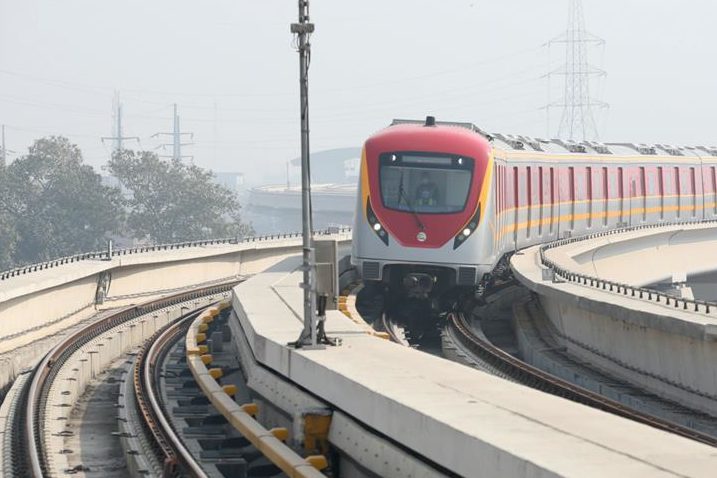According to the latest data released by the Ministry of Commerce of China, from January to October 2020, China’s foreign non-financial direct investment was about 100 billion USD, a year-on-year decrease of 3.2%, but the amount of investment in countries related to the “Belt and Road” was larger than in the same period in 2019. An increase of 23.1%. Up to now, China has signed 201 cooperation documents for the joint construction of the “Belt and Road” with 138 countries and 31 international organizations, and positive progress has been made in all aspects of work. The “Belt and Road” cooperation went against the trend and released a triple signal.
One is to demonstrate the forward-looking nature of the “Belt and Road” initiative. Wang Yiwei, a professor at the School of International Relations of Renmin University of China, said that the past economic globalization was capital-oriented, and it was a profit-seeking behavior to allocate resources around the world in order to maximize profits and minimize costs. Those who are richer and the weaker are weaker”. The difference is that the “Belt and Road” construction largely complements the previous shortcomings of economic globalization in terms of infrastructure and interconnection, and then taps into the potential of economic globalization.
Among them, the China-Europe Railway Express is a typical example. In the first six months of 2020, the import and export cargo of China-Europe freight trains increased by 30.9% year-on-year. In the case of severe obstacles in sea and air transportation, China has intensified its connection with countries related to the “Belt and Road” and became a stable global supply chain during the epidemic. “Steel Camel Team”.
The second is to prove that China took the lead in getting out of the shadow of the epidemic and pressing the “fast forward button” to resume work and production. During the epidemic, major projects such as the Hungary-Serbia Railway, the China-Bangladesh Padma Bridge, and the Manmai No. 1 Tunnel of the China-Laos Railway achieved both anti-epidemic and resumption of work. Wang Yiwei believes that the “Belt and Road” cooperation is becoming the backbone of maintaining economic globalization and free trade, and reforming and improving global governance. Countries are also seeing more clearly China’s important status in the global supply chain and industrial chain under the epidemic. Substitution, therefore more determined to carry out “Belt and Road” cooperation. From large countries attracting investment to large foreign investment countries, from exporting countries to importing countries, from “marketing for technology” to achieving independent innovation… A series of development changes have strongly boosted the growth of China’s investment in the “Belt and Road”.
The third is to show the mindset of China’s development benefiting the world. According to forecasts by many international organizations, China will be the only country in the Group of Twenty (G20) that can achieve positive economic growth in 2020. Coupled with the strong economic complementarity between China and the countries related to the “Belt and Road”, especially countries that rely heavily on tourism or foreign investment, they naturally value opportunities for investment from China and actively participate in the “Belt and Road” cooperation.
Through the joint construction of the “Belt and Road”, the Maldives built the first sea-crossing bridge, the Montenegro republic paved the first highway, and Laos moved from a “land-locked country” to a “land-linked country”… Within 7 years, a project was passed. Practical cooperation, each vision is accelerating to become reality, and the people of relevant countries have proven to the world that “the Belt and Road Initiative proposed by China is not a slogan or legend, but a successful practice and a wonderful reality.”
Just a month ago, the first large-scale rail transit project of the China-Pakistan Economic Corridor, the Lahore Orange Line Project in Pakistan, opened to traffic, opening up Pakistan’s “Metro Era”, fulfilling the long-cherished wish of several generations of Pakistan, and becoming a country. The business card and city engine promote the improvement of local economic and social development. On November 19, Sri Lankan President Rajapaksa stated that Sri Lanka will work with China to promote the “Belt and Road” cooperation projects between the two countries marked by the comprehensive development of Colombo Port City and Hambantota Port to achieve more substantial results. .
As an important symbol of China’s opening to the outside world, the “Belt and Road” construction has become an international public product with the highest degree of international recognition and participation, and a great practice to build a community with a shared future for mankind. E-commerce, digital currency, silver economy, online medical care… Looking ahead, China and the “Belt and Road” related countries will have a broader cooperation prospects in terms of policy communication, facility connectivity, unimpeded trade, financial and people-to-people connections, and will be shaken by storms The world economy brings more positive energy and stability factors.



